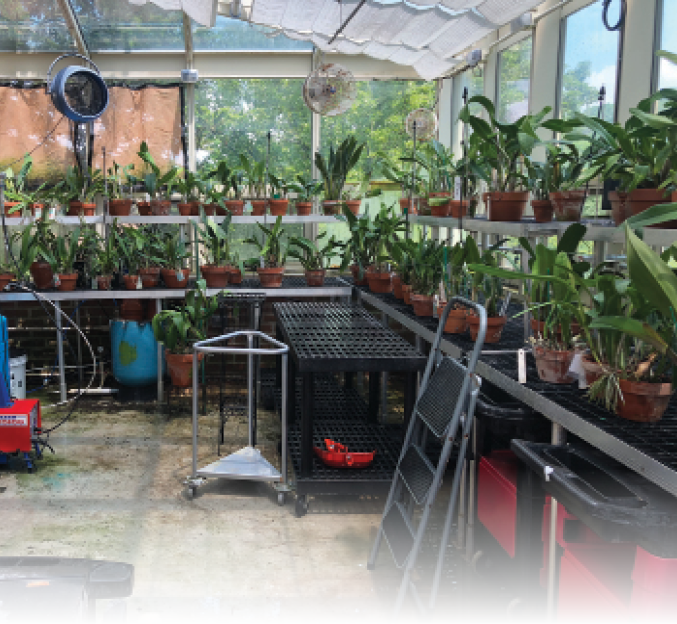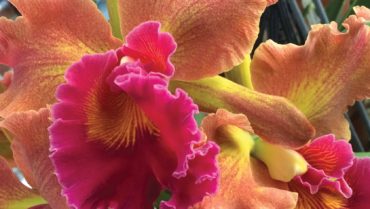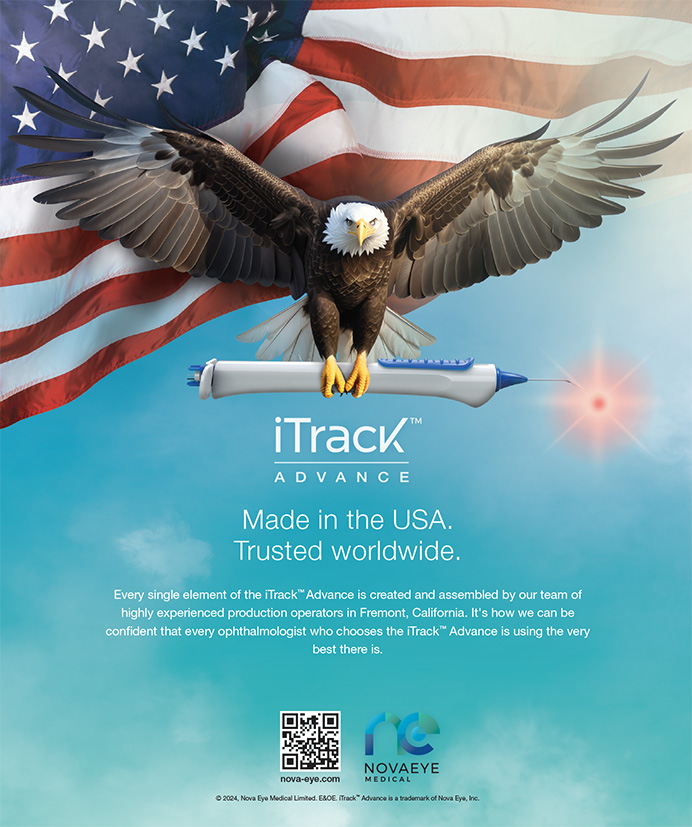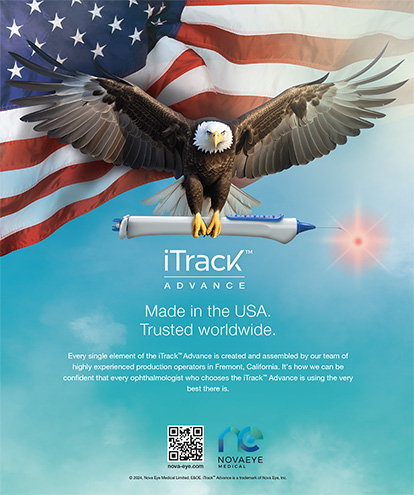
My husband calls me a “serial hobbyist.” When someone asks me what I like to do, the quickest answer I can give is “just hobbies,” because my hobby is collecting hobbies.
I recently read an article titled “Cognitive Fitness,” which explained how the act of play stimulates the frontal cortex of the brain.1 The authors discussed evidence suggesting that people can stave off mental decline and even Alzheimer disease through constant learning; and one of the primary vehicles for learning is our play activity. The article fascinated me because it mirrored my approach to hobbies and my passions outside of ophthalmology. I begin a new endeavor with intensity, and once I’ve learned it well I need to move on to something else.
Taking a Dive
One of my first passions was diving. I initially became certified for SCUBA diving as part of a college course requirement, but the course was canceled when the enrollment of certified students did not meet the necessary minimum. But of course, by then, I was hooked.
Eventually I completed about a dozen dives off the New Jersey coast during my senior year of college and a bit more after I started medical school, usually to explore shipwrecks. My skills were not advanced enough for decompression diving, so I could spend only about 15 to 20 minutes at a time on the ocean floor at depths of 70 to 80 ft, with hour-long rests at the surface in between. I could not swim inside the wrecks for too long, and I needed a flashlight to navigate my way in and out.
I often think back and wonder why I did this, and I believe the danger is what made it exciting. The water was extremely cold, and, until I approached the thermocline close to the ocean floor, visibility was extremely limited—to the point where I could not even see my hand in front of my face. During my second year of medical school, my husband and I traveled to Saint John in the Caribbean and did some shallow diving there, but we did not dive deeper than one atmosphere because I was pregnant with our first child.
Three years ago, my husband and I were recertified by the Professional Association of Diving Instructors, and we have dived a few times since then, limiting our depth to about 60 ft. I don’t feel as daring as I once did, and I don’t enter wrecks anymore. In Bermuda or in the Caribbean, the water is not as cold as in New Jersey, and there is a lot more to see, such as sharks, barracuda, eels, turtles, and rays. These days, I dive only two or three times per year in a very recreational sense (Figure 1).

Figure 1. Dr. Visco and her husband after a dive.
Cultivating a New Hobby
I have been growing orchids, mostly Cattleya genus, for the past 12 years. It required a steep learning curve; orchids need specific temperature, lighting, nutrient chemistry, and humidity levels to flower. It is an extremely challenging skill, and I love it. I currently have about 120 Cattleyas but at one time had more than 400.
About 6 years ago, I converted my porch at home into my own automated greenhouse where I grow these plants (Figure 2). The greenhouse has a reverse-osmosis watering system that can produce about 350 gallons of water per day. As it is drawn from the tank, the water must be pressurized and specific nutrients added for the misting system. I achieved this with several pressure pumps, but because they frequently burn out, I have to keep backup pumps and break out my safety goggles and drill tools when I replace them.

Figure 2. This porch was converted into an automated greenhouse to grow orchids.
The greenhouse also has a humidity and temperature control system. A control panel allows me to set the environmental parameters desired. I enjoy the high-tech nature of the computerized sensor that hangs from the ceiling and constantly monitors the environment of the room. If the humidity goes too high or too low, the system will either add mist or ventilate the space. A heater and evaporative cooler also similarly controls the temperature.
In addition to learning the technical nature of the systems inside the greenhouse, I needed to learn about all of the diseases that orchids can contract, how to diagnose them, and which chemicals to use to treat them. Furthermore, each spring, I repot at least one-third of my plants. After breaking the clay pots to get the plants out, I need to pull all of the decayed media off the roots to aerate them. I use a butane torch to sanitize my instruments every time I work on a plant to prevent the spread of disease. It’s similar to performing surgery, though I don’t sweat as much over the possibility of losing a plant!
I prefer the challenge of growing species and collectible orchids that are difficult to flower (Figure 3). These may only bloom once per year, and their culture requirements are much more particular than hybrids. I have an awarded orchid called Cattleya trianae, “Jungle Feather,” which is probably one of the most sought-after plants in my collection.


Figure 3. Two of the orchids grown by Dr. Visco.
Detailed information about orchid culture is difficult to find online. Most of the really meticulous information is found in old books. Thus, I have a collection of classic books about many types of orchids that describe the secrets of culture behind growing these plants. The literature will explain not only when an orchid was discovered, but, more important, where it was discovered; because if you know where the plant grows in nature, you can decode how to grow it. The history of Cattleya growing illustrates this beautifully because when the plants were first brought back to England from South America, the location and environment of origin were not reported. For decades they simply guessed how to grow them, killing thousands of plants in the process. The combination of history, chemistry, and biology is what I love about my orchid hobby.
Continued Learning
Though I am currently most passionate about orchids, as I’ve said, I am a serial hobbyist. A short time ago, my husband and I started collecting wine. Again, the chemistry and biology are intriguing, and I recently spent an afternoon with a wine maker in Napa Valley discussing how he chooses which clones to plant in which soil type. Some of the wine trips we have taken include travel to Bordeaux, Provence, Montalcino, and Castile and León. We now have a cellar of about 1,000 bottles.
I also enjoy photography and fitness activities such as advanced yoga, hot yoga, and couples yoga with my husband.
My most current interest is racing cars, which was stimulated after spending a day at the AMG Driving Academy in Lakeville, Connecticut. A few months ago, I raced a Lamborghini in Las Vegas. When I was on the last lap, traveling at top speed on the straightaway, I needed to maneuver the brake and make a 90º left turn into a subsequent right hairpin, but I spun out. The instructor taught me that, because I was traveling at a faster speed than I had been on the previous laps, I should have made a softer turn. With the adrenaline moving in my head at such a fast speed, my instinct was to turn hard. But the laws of physics dictate that, when traveling at a higher speed, the movement of a turn does not need to be as aggressive to position the vehicle in the proper direction. So I violated a very simple law of physics!
Keeping my brain occupied outside of the office releases a great deal of stress for me. When I’m potting orchids and troubleshooting or diagnosing diseases, I cannot think about my practice. I’m totally absorbed in my hobby. It was the same with diving. When I was 70 ft under the water, it was as scary as hell. I couldn’t think about my classes or whether I had an exam coming up because, before I knew it, I could be under the water too long and unable to surface safely. I had to be 100% focused on diving.
That’s what makes me a serial hobbyist: I find something that fully engages me intellectually and physically, and it’s like heaven.
1. Gilkey R, Kilts C. Cognitive fitness. Harvard Business Review. 2007. https://hbr.org/2007/11/cognitive-fitness. Accessed May 28, 2019.




